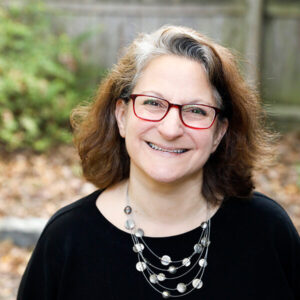 This month’s Industry Insider is with Lauri Hornik, President and Publisher at Rocky Pond.
This month’s Industry Insider is with Lauri Hornik, President and Publisher at Rocky Pond.
Normally, I write my own super nifty version of an interview subject’s bio with the occasional extra-helping of literary levity, but I found this one at the Penguin website, and it namedrops so many AWESOME books that I’m just rolling with this.
“Lauri began her career as an editorial assistant at Houghton Mifflin Children’s Books in 1988, right after graduating from Harvard. She moved to New York City six years later as Senior Editor at Bantam Doubleday Dell, and then joined Penguin in 1999 as Editorial Director of Dial. In her time at Penguin, she has edited the National Book Award Finalists A River Between Us by Richard Peck and The Rules of Survival by Nancy Werlin; New York Times Bestsellers The Book With No Pictures by B.J. Novak, Counting by 7s by Holly Goldberg Sloan, If I Built a School by Chris Van Dusen, and the Ordinary People Change the World series by Brad Meltzer and Christopher Eliopoulos; Caldecott Honor Book One Cool Friend by Toni Buzzeo and David Small; Coretta Scott King Honor Books How I Discovered Poetry by Marilyn Nelson and The Moon Over Star by Dianna Hutts Aston and Jerry Pinkney; Sydney Taylor Book Award winner Dancing at the Pity Party by Tyler Feder; Boston Globe–Horn Book Honor Books It’s Only Stanley by Jon Agee and The Best Man by Richard Peck; and Sibert Honor Book Turning 15 on the Road to Freedom by Lynda Blackmon Lowery.”
Thank you, Penguin/Random House website! And whew in terms of accomplishments, right?
Let’s get to know Lauri a bit better now via the interview. Here we go!
RVC: What were some of your earliest-but-vital experiences with books?
LH: Ooh, I love this question, because my childhood engagement with books was definitely a sign of what was to come!
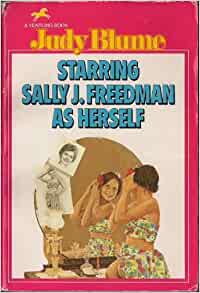 When I was eleven and obsessed with Judy Blume’s novels, I wrote her a fan letter in the form of a short story, and she wrote back a personal note in the margins of her printed bio. I still have and cherish that note.
When I was eleven and obsessed with Judy Blume’s novels, I wrote her a fan letter in the form of a short story, and she wrote back a personal note in the margins of her printed bio. I still have and cherish that note.
RVC: Lucky you!
LH: I loved reading and writing so much that in middle school I created a story publishing business: I wrote romance stories that I then made copies of and sold at school for a quarter. I was so annoyed when one of my friends would buy the story and share it with everybody else so that I only made 25 cents per story–my first experience of the realities of publishing!
RVC: Oh yeah. I’ve been there–that dreaded secondhand story market in elementary school. I figured I’d make a zillion buckeroonis with my Muppets “Pigs In Space” fanfiction, but it didn’t happen. (True story!) Back to you. At what point did you realize you were going to have a career in the world of stories?
LH: Beside my little business in middle school, you mean?
RVC: Yep!
LH: When I was in college, I spent a few summers editing school publications, including a Let’s Go travel guide. It was great fun and solidified my interest in working in books.
RVC: Your first book-world gig was as an editorial assistant at Houghton Mifflin Children’s Books. What AHA moments did you have there?
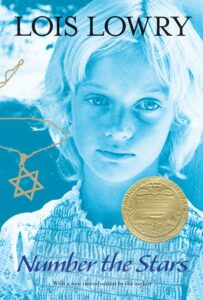 LH: I think the whole first year was one long aha moment. I had thought I’d be working in adult fiction publishing because those were the books I was reading at the time. But the job I found right out of college was in children’s books, and it was an instant fit–a very lucky path to have stumbled upon. I remember talking on the phone to Margret Rey (of Curious George fame) on day one, and also the joy, sometime in that first year, of being able to write the jacket flap copy for Number the Stars. (My mother still has a copy on her bookshelf: It was a big deal in our family.)
LH: I think the whole first year was one long aha moment. I had thought I’d be working in adult fiction publishing because those were the books I was reading at the time. But the job I found right out of college was in children’s books, and it was an instant fit–a very lucky path to have stumbled upon. I remember talking on the phone to Margret Rey (of Curious George fame) on day one, and also the joy, sometime in that first year, of being able to write the jacket flap copy for Number the Stars. (My mother still has a copy on her bookshelf: It was a big deal in our family.)
RVC: What was one of the most memorable early-career experiences with editing a picture book?
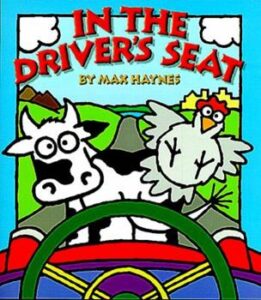 LH: Some of the illustrated books I remember most dearly are ones in which the author, illustrator, and I took risks with the format. In my early years at Bantam Doubleday Dell, I edited two exquisite and emotional storybooks, Buoy by Bruce Balan and Raúl Colón and Sky Memories by Pat Brisson and Wendell Minor, both of which took the picture book approach to an older reader. Unfortunately, neither really found its audience, but I cherish those books and am glad that we tried something different. I also remember the joy of collaborating with Max Haynes on an interactive picture book called In the Driver’s Seat that put the child behind the steering wheel. It was one of my first picture books as an editor, and such fun to work with Max on it.
LH: Some of the illustrated books I remember most dearly are ones in which the author, illustrator, and I took risks with the format. In my early years at Bantam Doubleday Dell, I edited two exquisite and emotional storybooks, Buoy by Bruce Balan and Raúl Colón and Sky Memories by Pat Brisson and Wendell Minor, both of which took the picture book approach to an older reader. Unfortunately, neither really found its audience, but I cherish those books and am glad that we tried something different. I also remember the joy of collaborating with Max Haynes on an interactive picture book called In the Driver’s Seat that put the child behind the steering wheel. It was one of my first picture books as an editor, and such fun to work with Max on it.
RVC: Let’s leap to the present. Rocky Pond. How/why did it come about, and what makes a Rocky Pond book a Rocky Pond book?
LH: I was the publisher of Dial Books for Young Readers for about twenty years–an extremely satisfying position to have had. But at some point during the pandemic, I realized that I wanted much more time for my own editing rather than supervising a team. There were books that I really wanted to pursue and develop–namely books with mental health content. This had been an interest of mine for quite some time, but I hadn’t had the space to really focus on building the list of mental-health-related books that I knew were deeply needed.
So, I launched Rocky Pond Books in the fall of 2022, and the first title published this past January. On the list you’ll find a focus on social-emotional learning, the mental illness experience, and also some Jewish content. That’s another personal interest of mine, and another subject matter that’s quite needed.
RVC: As President and Publisher, what’s the most difficult aspect of your work?
LH: The most difficult aspect is also one of the best aspects: the juggle of so many different tasks and projects. From the start I’ve loved this career for its variety; there is always a task waiting that suits my current mood, and no two projects are the same experience. But it’s also a career that requires many different skillsets and the ability to keep jumping from one thing to another, and since a publisher works with so many different people (authors, illustrators, agents, colleagues from various teams in the company), there’s also the need to be responsive to whatever your work partners throw at you.
Some days there are more balls in the air than I can keep aloft.
RVC: Describe a typical workday.
LH: My last answer hinted at the reality that there is no typical workday. One day I might spend all of my time line-editing a novel, the next I might be reading manuscript submissions for two hours, writing online copy for another hour, and then attending meetings the rest of the time (and fitting email into any empty minutes). Some of my favorite meetings are conversations with authors and illustrators and design meetings where I talk through picture book sketches with the art director and the book’s designer. In general, I’m spending lots of time reading or tinkering with words, both those written by authors and those I need to write myself to spread the word about the books.
RVC: In looking at picture books you’ve published over the years, you’ve got some real craftspeople when it comes to language. What are your thoughts on rhyme and some of more formal elements of poetry?
LH: I’m a fan of rhyming picture books, as long as the rhyme isn’t dictating the story. The story needs to be as well told in rhyme as it would have been in prose, but when an author has that skill, it can be such a delicious read-aloud experience. And beyond that, I do look for picture book texts that are lyrical or otherwise express a lot of personality through word choice.
RVC: Who are some of the books you’ve edited that showcase rhyme done well?
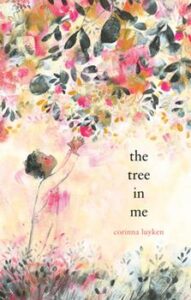 LH: A few great examples in terms of rhyme are Jon Agee’s It’s Only Stanley and Lisa Wheeler’s Someone Builds the Dream. And for lyricism, it doesn’t get better than The Uncorker of Ocean Bottles by Michelle Cuevas and The Tree in Me by Corinna Luyken.
LH: A few great examples in terms of rhyme are Jon Agee’s It’s Only Stanley and Lisa Wheeler’s Someone Builds the Dream. And for lyricism, it doesn’t get better than The Uncorker of Ocean Bottles by Michelle Cuevas and The Tree in Me by Corinna Luyken.
RVC: Something I’ve noticed about the books you seem to like is that there’s a strong sense of community to them.
LH: Yes, I am always most drawn to books that demonstrate how crucial and sustaining relationships are to one’s life, so children’s books about friendship and family and community are closest to my heart. The Uncorker of Ocean Bottles is about community stepping in for a neighbor who is alone. I’ll soon be publishing Lawrence & Sophia by Doreen Cronin and Brian Cronin, a picture book about an unlikely friendship between a boy and a bird, and how this friendship helps them both contend with anxiety. Charlotte Cheng and Amber Ren’s Night Market Rescue is about finding family. And you’ll definitely keep seeing this focus on my list.
RVC: Let’s help some of the aspiring picture book authors out there. What kinds of things are NOT a great fit at Rocky Pond?
LH: I’m not looking for board book originals and easy-to-reads. Books about science and nature will most likely not be a fit. Fairytale retellings will usually not be a fit. And books without any underlying meaning aren’t for me, but I’m also not looking for books in which the message is too overtly therapeutic.
RVC: This isn’t a picture book question, but I have to ask. What was your favorite Richard Peck experience/story?
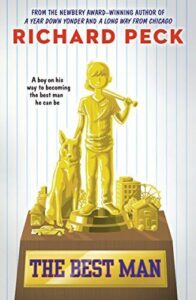 LH: Oh, Richard! He taught me so much through the years, and became such a dear friend. I miss him and think about him all the time. Thank you for asking about him. One of my favorite memories is of Richard coming into the office while we were working on The Best Man. He had figured out the final chapter–those perfect three pages. And he sat at my table and read that new chapter aloud to me.
LH: Oh, Richard! He taught me so much through the years, and became such a dear friend. I miss him and think about him all the time. Thank you for asking about him. One of my favorite memories is of Richard coming into the office while we were working on The Best Man. He had figured out the final chapter–those perfect three pages. And he sat at my table and read that new chapter aloud to me.
It was one of those rare moments in life–of awe and exhilaration and clarity. I’m very grateful for that memory.
RVC: Richard did a reading here in Sarasota a year or so before he passed. I got to hang out with him a bit after the reading—he was a sweetie. Very generous.
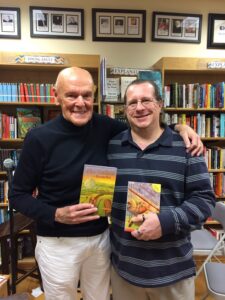
RVC: One more out-of-nowhere question. What’s something most people don’t know about B.J. Novak’s terrific The Book With No Pictures?
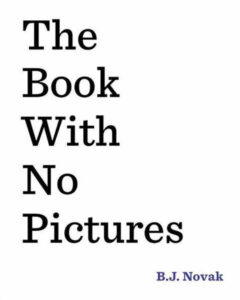 LH: B.J. puts so much care and study into his work, and with The Book With No Pictures, the look of the pages was an important part of the reading experience, one that he had thought about extensively before sharing the project with anyone. And so, when it was submitted to me for possible publication, it came as a composition notebook with each designed page attached to the notebook’s blank pages with paper clips. That way it could be read for the very first time in book form. I still have that original version.
LH: B.J. puts so much care and study into his work, and with The Book With No Pictures, the look of the pages was an important part of the reading experience, one that he had thought about extensively before sharing the project with anyone. And so, when it was submitted to me for possible publication, it came as a composition notebook with each designed page attached to the notebook’s blank pages with paper clips. That way it could be read for the very first time in book form. I still have that original version.
RVC: If I asked B.J. what it was like working with you as an editor, what do you think he’ll say?
LH: I like to think he would talk about me and the book’s designer, Lily Malcom, as great collaborators who were willing to try all sorts of ideas before making decisions. We three had an intense and wonderful time working on the book together.
RVC: Last question for this part of the interview. It’s brag time. What should readers be excited about in terms of forthcoming Rocky Pond projects?
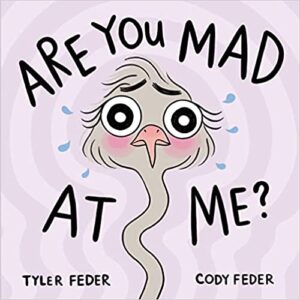 LH: I’ve mentioned a few upcoming beauties already, but here are a few more: Daniel Salmieri (the illustrator of Dragons Love Tacos) is the author/illustrator of a meditative, gorgeous, meaningful book called Before, Now, which uses a spare text of opposites to convey the whole world of one girl’s life, from babyhood to grandma-hood. Tyler Feder, the creator of Bodies Are Cool, has collaborated with her sister, Cody Feder, on a picture book about a socially anxious ostrich; it’s called Are You Mad at Me?, and it’s so fun while also being so helpful. And Casey W. Robinson and Nancy Whitesides have a touching picture book called Small Things Mended, about a grieving man who finds joy and purpose again with help from the kids in his neighborhood.
LH: I’ve mentioned a few upcoming beauties already, but here are a few more: Daniel Salmieri (the illustrator of Dragons Love Tacos) is the author/illustrator of a meditative, gorgeous, meaningful book called Before, Now, which uses a spare text of opposites to convey the whole world of one girl’s life, from babyhood to grandma-hood. Tyler Feder, the creator of Bodies Are Cool, has collaborated with her sister, Cody Feder, on a picture book about a socially anxious ostrich; it’s called Are You Mad at Me?, and it’s so fun while also being so helpful. And Casey W. Robinson and Nancy Whitesides have a touching picture book called Small Things Mended, about a grieving man who finds joy and purpose again with help from the kids in his neighborhood.
RVC: Alrighty, Lauri. It’s time for the SPEED ROUND. Let’s blast through some questions and get zoomy with those answers. Are you ready?
LH: Take it away!
RVC: Which character from The Office do you most admire?
LH: Andy Bernard–he bounces back from disappointments with so much energy and eternal hope.
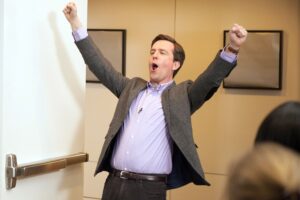
RVC: If you could travel back in time, what year would you choose to go to?
LH: 2004, to re-experience my first year as a mom.
RVC: What picture book creature do you wish really existed?
LH: Frog and Toad.
RVC: What are five things we’d see if we peeked in your office?
LH: A bright yellow sofa, various penguin knickknacks, a Newport Folk Festival poster, a can of Diet Coke, a dog bed for my puppy Peach.
RVC: What’s a recent picture book that deserved way more buzz?
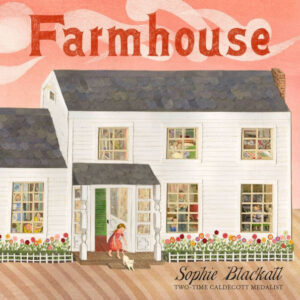 LH: I was blown away by Sophie Blackall’s Farmhouse–so meaningful, with an art-creation process like no other. Even though it was acclaimed, I would have like to have seen it get Caldecott notice.
LH: I was blown away by Sophie Blackall’s Farmhouse–so meaningful, with an art-creation process like no other. Even though it was acclaimed, I would have like to have seen it get Caldecott notice.
RVC: What’s the best compliment you ever heard about one of the books you edited?
LH: About 20 years ago I edited a picture book called The Sea Chest by Toni Buzzeo and Mary GrandPré, and my young nephew announced that it was his very favorite book. In fact, when he met Toni Buzzeo at a bookstore appearance, he told her, “I re-read your book before coming here to make sure that it really was my favorite, and it IS!” The best compliment is one that comes from the intended audience!
RVC: Thanks so much, Lauri!


There is so much in this article I didn’t know about you — a tribute to your humility in the face of so much success.
Congrats to me on being your mother-in-law!
I quite agree, Deborah. Lauri IS amazing. You should be proud!
Great interview! Thanks!
When you bring in someone like Lauri, it’s hard to go wrong! Thanks for stopping by, Angie.
Great interview, Ryan and Lauri! What gorgeous, meaningful, fun books you’ve worked on, Lauri.
Totally agree. What a list of first-rate titles!